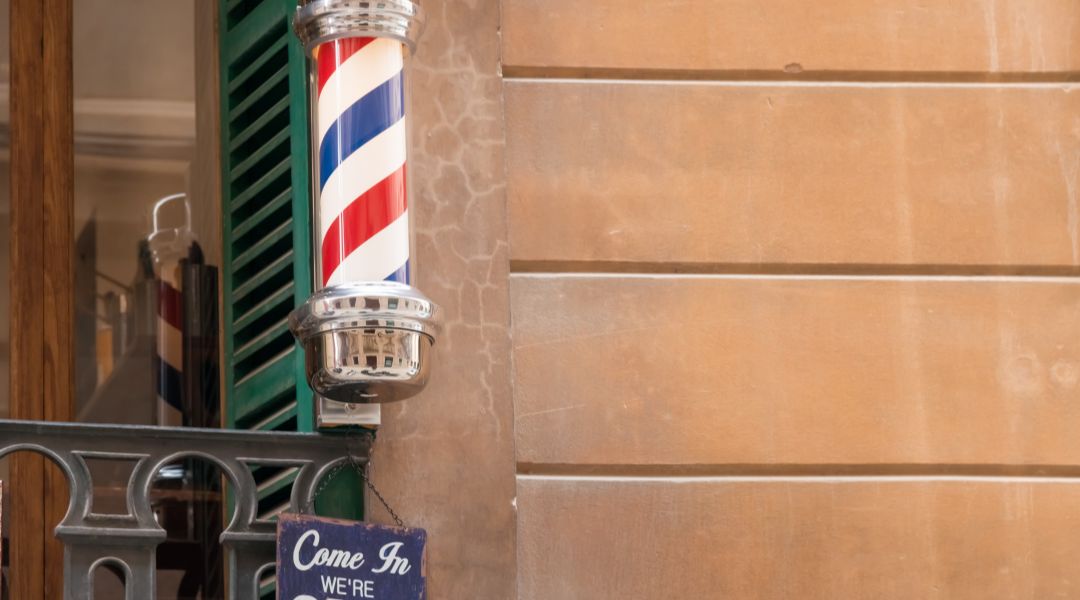The tradition of barbering has had a long-standing presence throughout time, serving as both an influence and reflection of society’s grooming ideals. This legacy continues to flourish in prestigious barber schools across Texas that provide thorough training in traditional methods while also embracing contemporary styles.
Through expert mentorship and hands-on experience, aspiring barbers develop the skillful balance of artistry and precision necessary for this timeless profession. As they continue the legacy rooted in heritage, new perspectives are added to the constantly evolving practice of modern-day barbering within Texas‘ vibrant culture.
Ancient Roots of Barbering
Barbering’s history goes back to ancient times. Egyptians shaped their hair and beards as early life rituals, showing status with good grooming. Haircutting was a craft held by priests in Greece. They used simple tools like combs made of bones or oyster shells and sharpened flint for trimming.
In Rome, barbershops became centers for news, where men gathered not just for shaves but also for conversations on the politics of the day. These skills were honed over centuries until schools emerged dedicated to teaching them properly. Much like modern institutions such as those found across Texas today, these places foster an age-old tradition of marrying artistry with social ritual.
Barbers in Medieval Times
In medieval times, barbers did more than just cut hair. They were known as “barber surgeons,” a term that nods to their medical skills. People went to them not only for grooming but also for tooth pulling and bloodletting, a practice believed then to cure ailments.
In towns, barber shops became social spots where men met and talked. The red and white pole outside signaled the place of a barber. It stood for the bloody bandages from surgeries wound around a staff. Today’s Texas barbers maintain these traditions with modern twists in style and service offerings.
Rise of the Barbershop Culture
Barber culture, a blend of old charm and new trends, thrives today. People come to these shops not just for haircuts but for the unique mix of history and modern touch they offer. The red, white, and blue pole stands as a symbol of this storied past where once barbers did more than trim hair. They were trusted community figures performing surgeries, too.
Over time, barbering became its own craft with traditions that customers love it’s about feeling at home while getting groomed in style. Despite changing times, the essence remains. People choose barbershops for their comforting familiarity mixed aptly with current touches.
Innovation and Evolution Through Ages
In the realm of barber culture, innovation has always played a key role. Since its early days, tools have evolved from basic shears to high-tech clippers; techniques grew more complex as styles changed with time. Education for barbers transformed, too. It’s now about precise cuts and skin care.
Safety standards improved significantly, leading to cleaner shops that offer diverse grooming services today. This progress reflects not just changing fashions but also advances in technology and understanding of hygiene, essential aspects for any successful trade rooted deeply in tradition yet constantly adapting to meet modern needs.
Texas: A Hub for Modern Barber Education
In Texas, barber schools take tradition seriously. Past barbers doubled as surgeons. Symbols like red and white poles marked their trade; bloodletting was part of the job. Now, these colors echo a history where cleanliness mattered deeply to them. They used leeches or blades for health treatments back then.
When customers bled from procedures, ringing in stark contrast with today’s focus on style and grooming alone were bandages stained bright crimson, memories within each stripe on the iconic barber pole that stands outside modern Texan shops. Times changed, and so did tools. Basins once held clotted lifeblood during ancient practices, but now the symbol, a red and white spiral, represents a shift towards exclusive hair care expertise thriving in Texas’ educational establishments.
These institutions uphold standards and honor heritage, respecting historical ties. They advance professional training, offering calm comfort with blue stripes, and promise a legacy experience with precision to every client seeking more than just a haircut.
Legacy and Diversity in Texan Barbicide Training
In Texas, barbers receive training in using Barbicide, a key disinfectant that ensures clean tools and safe practices. Texan barber culture thrives on its legacy of strict hygiene standards. Students from diverse backgrounds learn the importance of sterilizing combs, clippers, and scissors to prevent disease spread between clients.
The state mandates this education as part of licensing exams. Thus, future professionals underscore health alongside haircuts or shaves. Quarterly workshops update licensed practitioners with new sanitation protocols while celebrating diversity within their ranks, making sure all who come for a trim leave not just styled but also protected against germs.
Future Trends in Professional Grooming Services
Professional grooming services are seeing a shift towards personalized experiences. Salons now use data to tailor cuts and styles that fit each client’s unique look. They invest in tools for precision, like advanced clippers and hair analysis tech, creating bespoke services beyond the basic trim or shave.
Sustainability drives change and eco-friendly products gain ground as shops highlight their commitment to earth care. Increased training programs focus on new techniques while emphasizing hygiene safety guidelines, ensuring experts stay at the forefront of industry standards. Expect mobile barbershops to rise, delivering convenience by bringing top-notch haircutting directly to customers’ doors where they live or work.
The history of barber culture is rich and storied, evolving from ancient grooming rituals to today’s modern barbershops. From being highly respected in medieval times as surgeons and dentists to the iconic red-and-white striped poles symbolizing their craft, barbers have always played a pivotal role in society. Texas Barber College honors this heritage by teaching new generations the time-honored skills required for success within this enduring trade.
As styles continue to change, the essence of barbering remains a blend of artistry, tradition, and community connection that thrives across ages.

